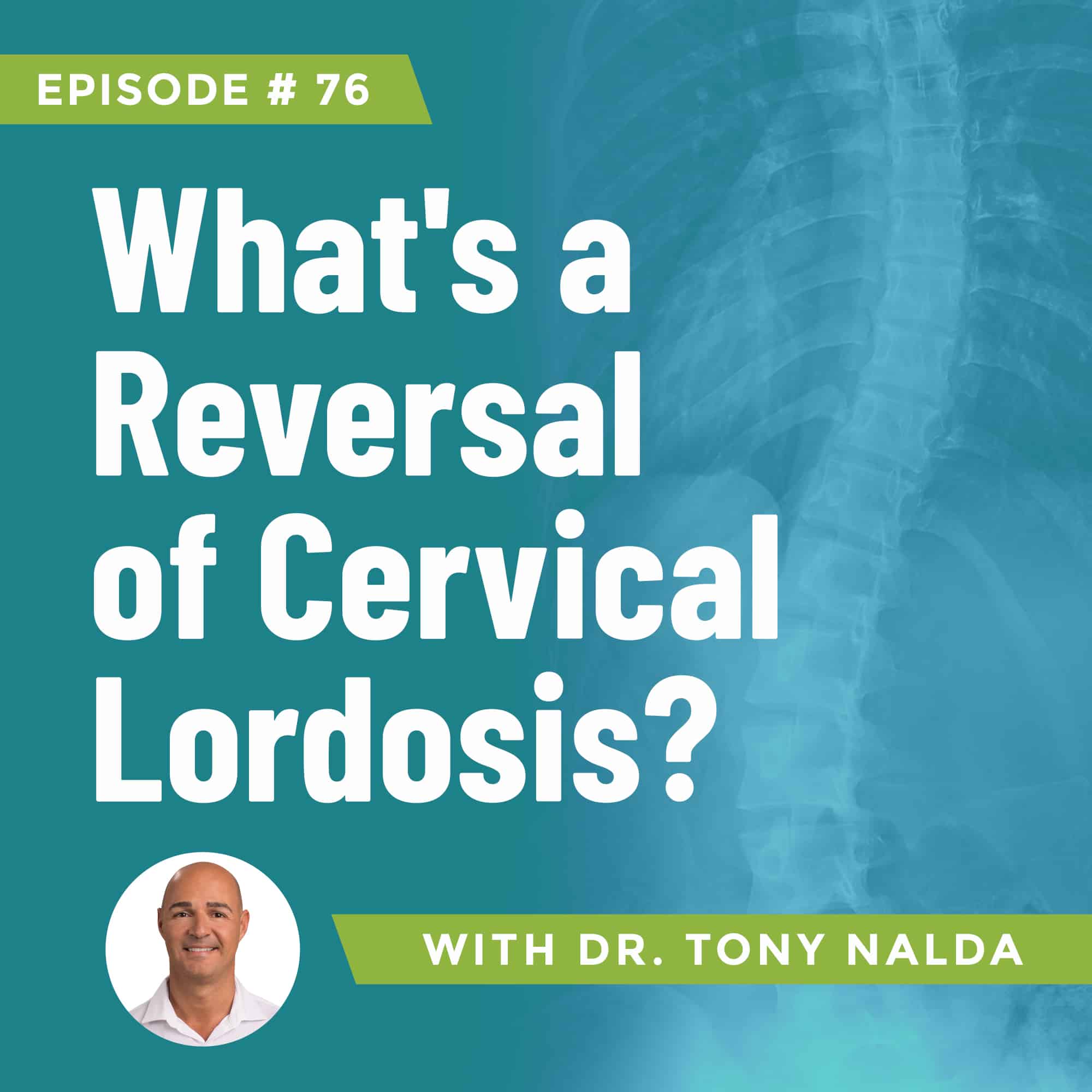Episode 76: What's a Reversal of Cervical Lordosis?
When examining X-rays or MRIs of the cervical spine, terms like cervical hyperlordosis, reversal of cervical lordosis, or cervical kyphosis often come up. To grasp these concepts, it's essential to understand what cervical lordosis is and why it matters.
The spine possesses natural curves when viewed from the side, making it stronger against gravitational and compressive forces. These curves distribute mechanical stresses evenly throughout the spine, including the neck (cervical), mid-back (thoracic), and lower back (lumbar). There are two main types of curves that exists in the spine and depending on where they’re located, it can either be abnormal or normal.
A normal range for lordosis typically falls between 30 to 40 degrees. An ideal cervical curve is around 40 to 45 degrees, but there's a bit of flexibility within this range.
Hyperlordosis and Hypolordosis
Hyperlordosis refers to an excessive forward curvature of the cervical spine, which can be problematic. On the other hand, hypolordosis occurs when the curve drops below the normal range. When the cervical spine bends in the opposite direction and becomes kyphotic, it's called a reversal of cervical lordosis.
Reversal of Cervical Lordosis
The reversal of cervical lordosis refers to a condition where the natural forward curvature of the cervical spine is lost, and the spine starts bending in the opposite direction, forming a backward curve or kyphosis in the neck. This reversal is problematic because it disrupts the spine's normal mechanical load-bearing capabilities, which can lead to various issues, including neck pain, nerve dysfunction, degenerative changes in the spine, and even organ function impairment. Correcting the loss of cervical lordosis is crucial to restore proper alignment and prevent further complications in spinal health.
Dr. Tony Nalda has shed light on the significance of cervical lordosis and its role in spinal health. Treatment should focus on identifying the underlying cause and restoring the normal cervical curve. The ultimate goal is to correct the loss of cervical lordosis and improve overall well-being.
For more on this, check out Dr. Tony Nalda’s podcast. Don't forget to subscribe for more valuable insights and discussions.
Artlist.io 847544
Podcast: Play in new window | Download
Subscribe: RSS
Dr. Tony Nalda
DOCTOR OF CHIROPRACTIC
After receiving an undergraduate degree in psychology and his Doctorate of Chiropractic from Life University, Dr. Nalda settled in Celebration, Florida and proceeded to build one of Central Florida’s most successful chiropractic clinics.
His experience with patients suffering from scoliosis, and the confusion and frustration they faced, led him to seek a specialty in scoliosis care. In 2006 he completed his Intensive Care Certification from CLEAR Institute, a leading scoliosis educational and certification center.
About Dr. Tony Nalda
 Ready to explore scoliosis treatment? Contact Us Now
Ready to explore scoliosis treatment? Contact Us Now








